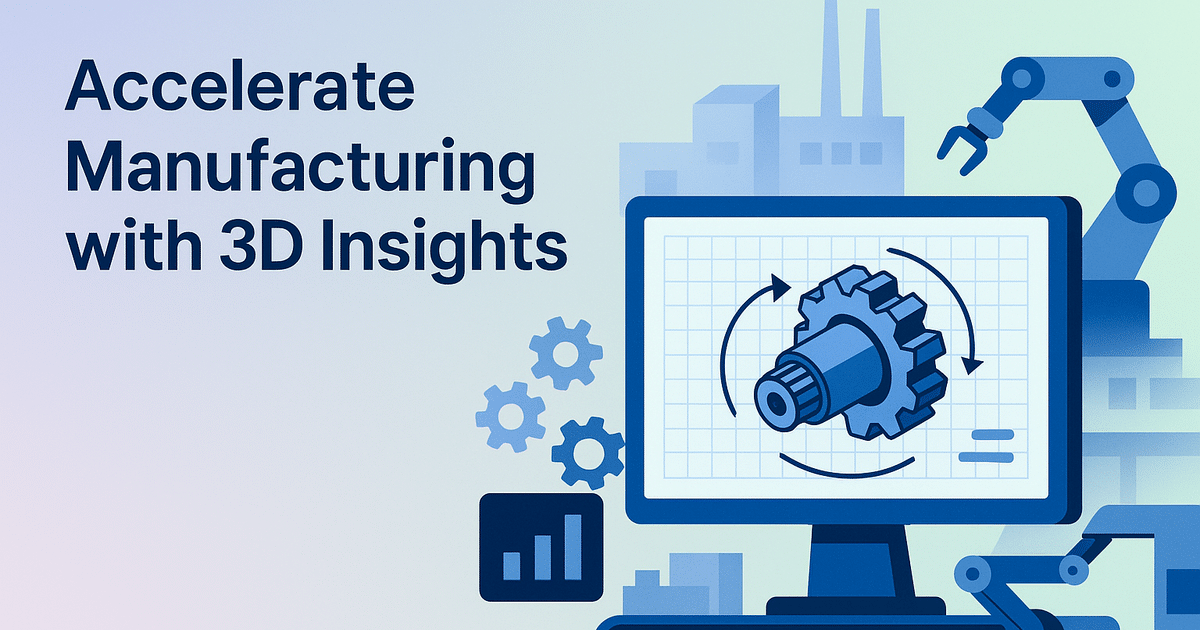Why 3D Technical Illustration Matters Now
Traditional 2D schematics still work, but they struggle to convey complex assemblies, tight DFM (Design for Manufacturing) tolerances, or ECU development wiring paths. Interactive 3D visuals eliminate ambiguity, accelerate onboarding, and preserve institutional knowledge as experienced staff retire. When paired with value engineering and legacy systems modernization, 3D documentation becomes a cornerstone of end-to-end solutions that balance cost and quality.
Top 7 Benefits of 3D Technical Illustrations for Manufacturing Firms
- Faster Knowledge Transfer
Animated cutaways and exploded views let new hires understand component relationships in hours, not days. Interactive callouts capture tribal knowledge before it walks out the door, ensuring continuity even as veteran engineers retire. - Reduced Production Errors
Clear 3D visuals highlight torque specs, alignment cues, and hazard zones in ways flat drawings cannot. Plants using 3D work instructions report up to 25% fewer assembly defects during SOP. - Accelerated SOP Timelines
Virtual walk-throughs enable cross-functional teams to validate tooling, DFM changes, and safety guards long before physical assets arrive. That foresight can compress pre-production review cycles by two to four weeks. - Streamlined Regulatory Compliance
3D illustrations document safety clearances, labeling, and maintenance procedures in line with evolving standards and requirements. Auditors gain immediate visual confirmation, reducing the back-and-forth that stalls certifications. - Enhanced Legacy Systems Modernization
When upgrading decades-old equipment, reverse-engineered 3D models overlay new components onto existing layouts. This clarity steers retrofit crews away from hidden interferences, shortening downtime and supporting turnkey delivery of modernization projects. - Cross-Disciplinary Collaboration
Procurement, quality, and field-service teams frequently speak different technical dialects. Intuitive 3D assets create a shared language, closing communication gaps that otherwise drive schedule slips and cost overruns. - Tangible Cost Savings Through Value Engineering
Visualizing part substitutions or lightweighting options in 3D exposes unnecessary material usage early. Clients routinely capture 5-8% unit-cost reductions without compromising performance or reliability.
Build Smarter, Scale Faster with Katalyst Engineering
Wondering how to align innovation with efficiency in your operations? Our tailored solutions bridge the gap seamlessly
How 3D Illustrations Fuel Your Digital Transformation Roadmap
3D technical illustration is not an isolated add-on; it is a pivotal link between CAD, PLM, MES, and shop-floor execution systems. When integrated into an end-to-end solution:
- Visual datasets feed AR maintenance apps, keeping technicians hands-free on the line.
- BOM changes update automatically across training modules, eliminating version confusion.
- Interactive PDFs embed directly into electronic SOP packets for instant shop-floor access.
Case Snapshot: Turning Drawings into Production Wins
A Tier-1 automotive supplier preparing a new ECU development line faced a 40-percent turnover in senior technicians. Our co-working team transformed 2D drawings into interactive 3D manuals. Results:
- SOP approval accelerated by 18 days.
- First-pass yield improved from 91 to 97%.
- Training time for new assemblers dropped from eight hours to five.
The project paid for itself before the first year of full-rate production concluded.
2D vs. 3D Documentation at a Glance
The following table summarizes the differences between 2D drawings and 3D technical illustrations in a manufacturing context:
| Criterion | 2D Drawings | 3D Technical Illustrations | Impact on Operations |
| Error Identification | Requires expert interpretation | Immediate visual cues | −25% defects |
| Knowledge Retention | Text-heavy, hard to update | Interactive, self-paced | +30% retention |
| Compliance Evidence | Multiple reference docs | Single unified asset | −40% audit prep time |
| Update Cycle | Manual redraws | CAD-linked automation | −35% revision labor |
Engaging with a Co-Working Team Model
We don’t hand off a binder and walk away. Instead, we work together through these phases:
- Discovery Workshop:
We map current documentation workflows, compliance needs, and talent gaps to establish clear success metrics. - Pilot Visualization:
A low-risk 3D conversion of a high-impact assembly validates assumptions and secures stakeholder buy-in. - Scalable Rollout:
Our multidisciplinary team embeds alongside yours, integrating visuals with PLM and MES for turnkey delivery. - Continuous Optimization:
Post-launch analytics track defect rates, training hours, and revision cycles to drive ongoing value engineering.
Pro Tip: Begin with a single product family or legacy line. Quick wins build internal momentum and fund broader modernization.
Turn Complex Engineering Challenges into Competitive Advantage
Struggling with designs that don’t scale or processes that slow you down? Katalyst helps you engineer smarter, faster, and better.
FAQ
How difficult is it to integrate 3D illustrations into existing PLM systems?
Most modern PLM platforms accept neutral formats such as XVL or 3D PDF. Our integration framework maps metadata so version control and change tracking remain intact.
Will 3D visuals replace my technical writers?
No. Writers shift from drafting static text to curating interactive experiences, elevating clarity and retaining critical engineering context.
What if my CAD data is outdated or incomplete?
We reconstruct or clean legacy models as part of our end-to-end solution, ensuring accurate geometry before illustration begins.
Ready to See the Difference?
A 45-minute visualization assessment reveals how quickly 3D technical illustration can reduce defects, safeguard institutional knowledge, and accelerate your next SOP. We invite you to schedule a collaborative session with our senior consultants; no cost, no obligation, merely actionable insight. Let us turn complexity into clarity together.





